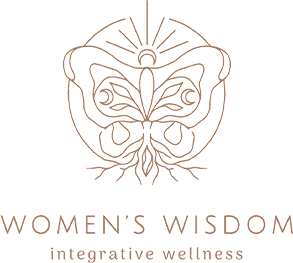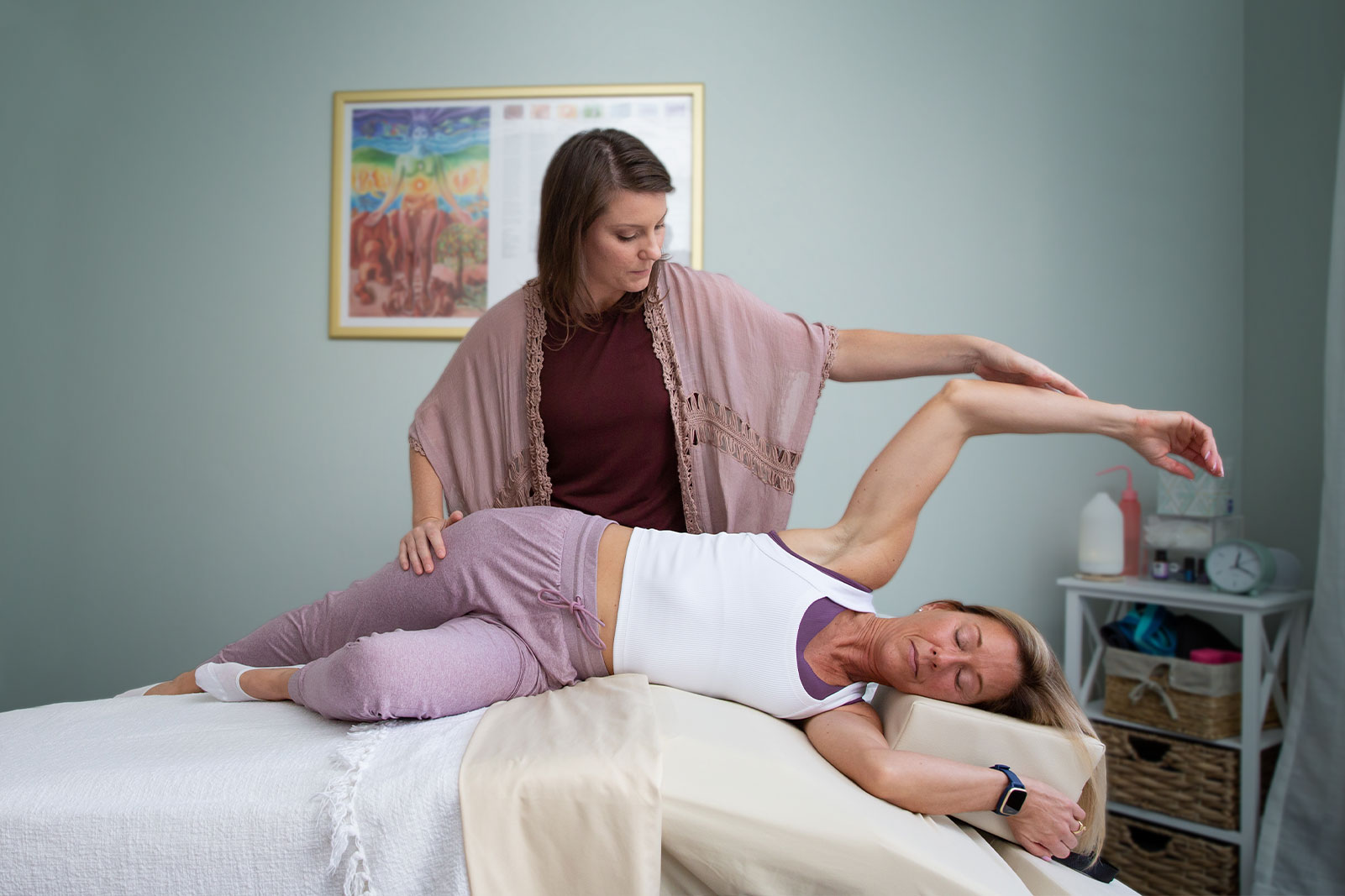We are here to help facilitate your body’s beautiful design and power for innate healing. You hold the key to unlocking that door. Let’s step through it together.
Holistic Physical Therapy
What to Expect During Your Holistic Pelvic Physical Therapy Sessions:
Comprehensive, whole-body evaluation and individualized treatment of the following:
- Myofascial restrictions
- Visceral restrictions
- Scar tissue mobility and adhesions (whether from episiotomy, perineal tearing, cesarean, or any other abdominal or pelvic surgery)
- Pelvic floor and core tightness, weakness, inactivity or overactivity
- Other associated muscle imbalances
- Pelvic floor muscle coordination and control
- Abdominal wall engagement and strength
- Diastasis Rectus Abdominus (DRA)
We provide an integrative treatment approach consisting of skilled, hands-on manual therapy, therapeutic and corrective exercises, neuromuscular re-education, biofeedback, and self-care guidance.
Manual Therapy Techniques Used During Treatment:
- Myofascial Release
- Visceral Manipulation
- Craniosacral Therapy
- Joint Mobilization
- Soft Tissue Mobilization
- Internal Pelvic Floor Release (vaginal and/or rectal)
We will not only address your areas of pain, weakness, and tightness but also go beyond to uncover and bring awareness to the underlying root causes so you may discover ways to support your healing and prevent the pain and dysfunction from recurring. Bringing attention to full-body awareness, your unique holding patterns, daily posturing habits, breathing patterns, movement patterns and improving core strength and stability can help you move through life feeling more at home in your body.
Pregnancy & Postpartum Physical Therapy & Wellness
Preconception Body Balancing & Wellness
Pregnancy Physical Therapy & Wellness
- Guidance on optimal body mechanics with daily activities.
- Instruction of safe exercises and stretches to help you feel your best during pregnancy.
- Addressing any orthopedic concerns during pregnancy (as listed above).
- Guidance on support garments (if needed).
- Learn to honor your unique experience and connection to your beautiful changing body.
Birth Preparation
- Helping you strengthen your body-mind connection to help prepare for your optimal birth experience.
- Prepare your perineum and pelvic floor for the birthing experience.
- Teaching the management of breath and various positioning to facilitate laboring and birthing.
- Teaching the role of the pelvis and pelvic floor during the birth process so you may better understand your body and the power you hold to be an active participant during your birthing experience.
Postnatal Recovery
- Education on supporting healing of your perineum, cesarean scar, and body as a whole.
- Learn to reconnect with your pelvic floor and core to optimize your healing, function, and strength.
- Diastasis Rectus Abdominis (DRA) assessment and treatment.
- Regain your strength and confidence in your body.
- Guidance on safe return to exercise.
- Scar tissue assessment and management (cesarean, vaginal tearing, or episiotomy).
- Teaching awareness and management of intra-abdominal pressure, why it matters and how it can be used to help to improve your symptoms.
- Guidance on optimal nursing positions and specific stretches to help keep you out of pain.
- Heal from potential birth trauma- physically and emotionally.
- Internal pelvic floor and urogenital mobility assessment and treatment (usually at 6 weeks postnatal).
- Body Restoring & Balancing with various techniques including visceral manipulation, craniosacral therapy, myofascial release/ soft tissue release.
Treating Women with the Following Symptoms and Associated Diagnoses:
Pelvic Pain
- Endometriosis: Symptoms may include painful periods, pain during or around ovulation, pain during or after sex, heavy bleeding or irregular bleeding, pain with bowel movements or urination, pain in the pelvic area, low back, or legs, nausea, fatigue, diarrhea and/or constipation, fertility challenges
- Dysmenorrhea: Painful periods, typically involving heavy cramping
- Ovulation Pain
- Coccyx and Rectal pain
- Interstitial Cystitis/ Painful Bladder Syndrome
- Painful bowel movements
- Pregnancy related musculoskeletal pain
- Postpartum pain, weakness, and dysfunction
- Vulvar pain/ Vulvodynia
- Vaginismus: Involuntary tensing or contracting of the vaginal muscles with some or all types of vaginal penetration
- Dyspareunia: pain with intercourse, superficial and/or deep
- Scar pain related to pelvic surgeries and associated adhesions
Prenatal & Postpartum Wellness
- Supporting women throughout their pregnancy and postpartum journey so they may feel empowered, strong, and connected during this very special time
- Diastasis Recti Abdominus (DRA)
- Pelvic pain
- Low back pain
- Hip pain
- Sacroiliac pain
- Coccyx pain
- Pubic symphysis pain
- Sciatica or other nerve issues
- Pain/tightness related to breastfeeding
- Stress urinary incontinence
- Urinary urgency and frequency
- Pain with transitional movements
- Prolapse (cystocele, rectocele, uterine prolapse, rectal prolapse)
- Pain with intercourse or other vaginal insertion (tampons, speculums, etc.)
- Scar pain related to cesarean or vaginal delivery/ tearing
- Healing from traumatic birth experience
Bowel and Digestive
- Constipation: Normal bowel movement frequency ranges from 3x/week to 3x/day, depending on the individual, should be pain-free, easy to pass, and ideally a smooth consistency. Constipation consists of stool that is dry, hard, ball-like formed, and difficult or painful to pass. Some may feel the need to excessively strain or brace their perineum to fully evacuate. Constipation may be caused by poor diet, poor hydration, decreased physical activity, motility issues, inflammation, pelvic floor muscle dysfunction/incoordination, side effects from medicine, recent surgery, and functional disorders
- Pain with defecation: may or may not be associated with constipation. Those with endometriosis or other pelvic related conditions may experience pain with defecation especially near their period
- GERD/Reflux
- Irritable Bowel Syndrome (IBS): Symptoms often include abdominal pain, bloating, diarrhea and/or constipation, without visible signs of disease in the gastrointestinal tract. This is often a multifactorial syndrome that benefits from taking the time to discover root cause(s) by taking a closer look at lifestyle, stress, sleep, diet habits, nutrition, and hydration
- Fecal Incontinence: Leakage of either solid or liquid stool. This may occur to women postpartum if there was tearing involved, post surgical, or related to food sensitivities. Gas incontinence is commonly experiences postpartum with pelvic floor muscle weakness
- Scar pain related to abdominal surgeries and associated adhesions
Orthopedic
- Back pain
- Hip pain
- Sacroiliac joint pain
- Sciatica
- Pubic pain
- Coccyx pain
- Neck pain
- Headaches
- TMJ
- Shoulder pain
- Knee pain
- Numbness/tinging in upper and lower extremities
Treatment techniques include functional movement analysis and mechanics correction, myofascial release, visceral manipulation, craniosacral therapy, joint mobilization, soft-tissue mobilization, corrective therapeutic exercise, postural retraining, balance and core stabilization.
Bladder
- Interstital Cystitis/ Painful Bladder Syndrome
- Urinary Urgency: An immediate and sudden urge to urinate which may leave you feeling as if you won’t make it to the toilet. Urinary urgency may also be experienced with habitual activities such as every time you pull into your driveway, put the key in the door or get into the shower. Urinary urgency may or may not be associated with urinary frequency
- Urinary Frequency: Normal urination is about 5-7x/day with some variation depending on individual needs such as breastfeeding or sporting activities. People who experience urinary frequency may urinate once per hour or even multiple times per hour
- Nocturia: night time voiding waking you from sleep
- Overactive Bladder Syndrome (OAB)
- Urinary Urge Incontinence: urine leakage associated with urgency
- Urinary Stress Incontinence: urine leakage with sneezing, coughing, laughing, or loading activities such as lifting and carrying (groceries, car seat, child, etc)

